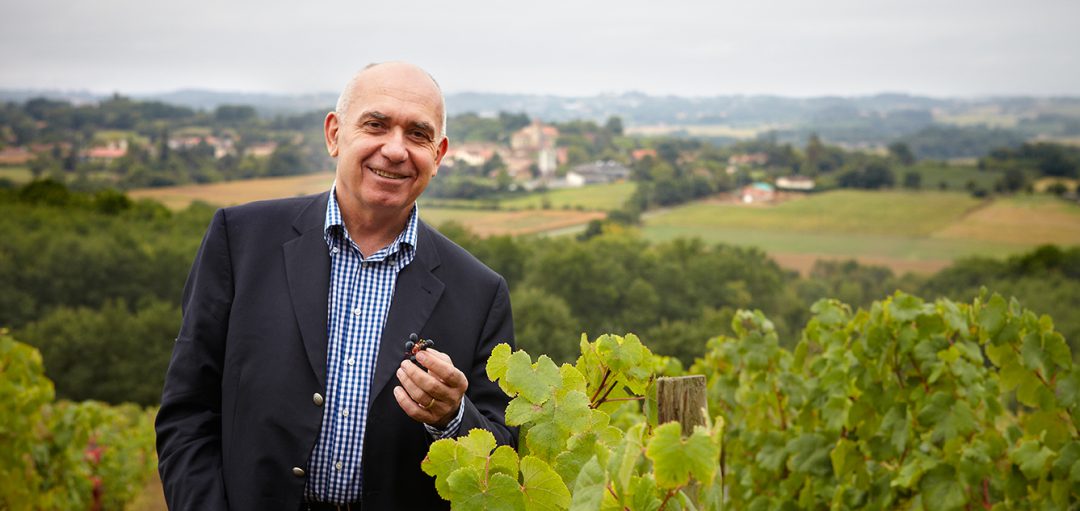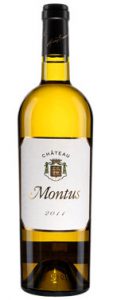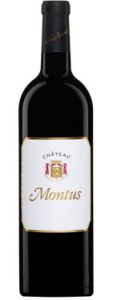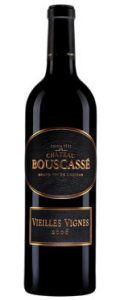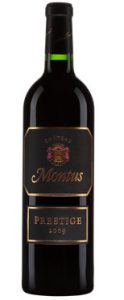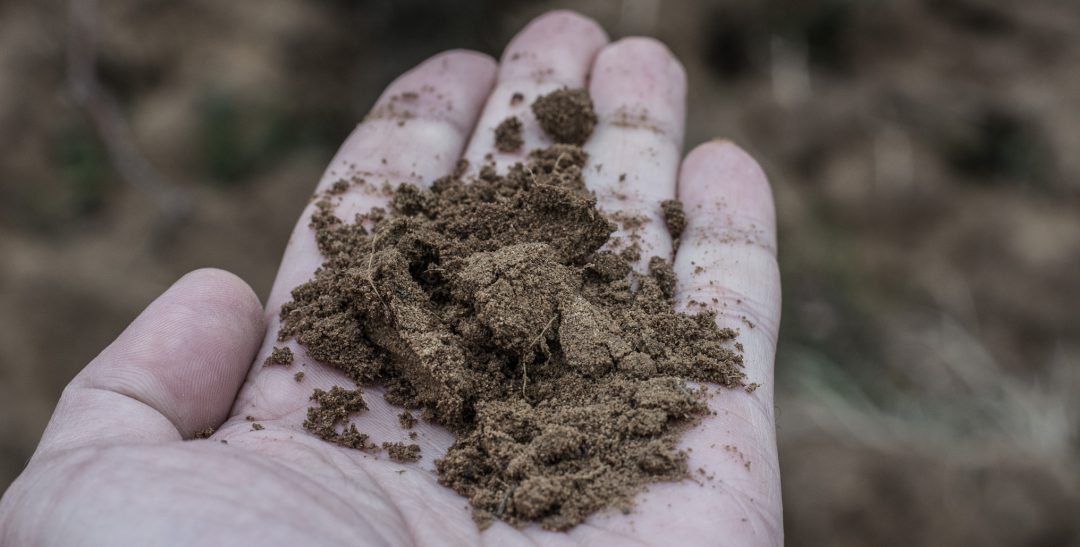Photo credit: Vignobles Alain Brumont
Alain Brumont is a force to be reckoned with. This is evident from the moment he begins to speak; from his commanding tone to his broad Southwestern French accent. He has worked tirelessly through out his career to bring the wines of a little known vineyard to the world stage. His estate, Château Montus, is better known in many wine circles than Madiran, the appellation from which it hails.
I had the pleasure of meeting Alain and his charming wife Laurence at a wine dinner in Montréal this past May. Seated beside him at table, I listened with rapt attention to his views on his region, his winemaking philosophy and his many passion projects.
Brumont is the quintessential “self made man”; a concept so dear to us North Americans. He left school at the tender age of 16 years-old and laboured in his fathers’ vines for a number of years before taking out a loan, on his own, to purchase Château Montus. Today, he crafts wines not only from his four properties in Madiran, but also from his négociant activities in the Côtes de Gascogne.
Brumont believes strongly in sustainable agriculture, though he doesn’t feel the need to seek out certification. His flock of sheep fill the vineyards in winter and nearby pastures in summer, providing an abundant source of natural manure. ‘We use no other form of fertilizers in our vineyards’ states Brumont with pride.
The climate in Madiran, Mediterranean with Atlantic influences, is ideal for grape growing, providing mild springs, optimal sunshine and tempering, cool breezes. With such optimal weather conditions, Brumont asserts that it is a relatively easy thing to limit vineyard treatments and work with minimally invasive products.
The same low interventionist methods are employed in the cellars. ‘Our wines are never acidified or chaptalised’ says Brumont. In fact, he is working towards a zero entrants policy for his wines. Stringent cellar hygiene is a major part of this. ‘Our equipement (pumps, hoses, etc.) are washed with 300°c vapour before each use and inerted with nitrogen gas’. Lowering bacterial and oxidative risks allows sulphur levels to be sharply reduced.
These practices in vineyard and cellar all stem from one overriding goal: to create the best quality wines possible, that reflect the best of their terroir and their grape. The star variety of Madiran, Tannat, is often derided as yielding rustic, overly tannic reds. With his many years of experience, Brumont has learned how to harness this powerful nature, creating full-bodied, long-lived yet suave wines that delight critics world-wide. ‘I only use the free-run juice for my reds’ he explains. ‘The muscular tannins come from the pressed grapes”. Brumont’s ‘trash’ is another man’s treasure, as the dark, tannic press juice commands a good price on the négociant market, to beef up blends from other regions where the dominant grapes are lighter in body and structure.
The desire to craft wines that, while still powerful, are approachable in their youth, stems from Brumont’s love of food and wine pairing. Every day, at Château Bouscassé, Alain and his team dine together at mid-day, often inviting visiting guests to join them. So great is his interest in all things gastronomic that Alain is currently investing in a project to raise Noir de Bigorre pigs famous in the region for their fine hams.
A selection of excellent wines were served through out the evening, ably complimenting the fine cuisine of the Ritz-Carlton Montréal. Here are a short list of my favourites:
(What do VW, PW and LW mean? Click on my wine scoring system to find out).
Photo credit: www.saq.com
Château Montus white 2012 (Pacherenc du Vic-Bilh Sec) – 93pts. PW
The Madiran appellation is exclusive to red wines. Local producers grow their white grapes in the neighbouring vineyard of Pacherenc du Vic-Bilh. Dry and sweet whites are crafted from the local varieties: Arrufiac, Manseng, Courbu, Sauvignon, Sémillon.
Brumont uses the little known Petit Courbu as the dominant grape in his Château Montus Blanc. Aged for over 2.5 years in 600L barrels, this vibrant white features attractive toasty, stone fruit, floral and spiced notes on the nose. Crisp and lively on the attack, with a full-bodied, creamy mid-palate and a pleasant, slightly bitter grapefruit pith note on the long finish. This is a very stylish white for the price.
Where to buy: SAQ (24.90$)
Château Montus red 2012 (Madiran) – 92pts. PW
Opaque, deep ruby colour. Intense, ripe dark fruit aromas underscored by floral notes and hints of earth and cedar. Vibrant acidity offsets the big, brooding structure of this as yet tightly knit red. The mid-palate reveals lovely concentration of dark fruits, cocoa and coffee. Firm, chewy tannins and well integrated cedar oak frame the persistent finish. Decant several hours before serving.
Where to buy: SAQ (28.85$)
Château Bouscassé Vieilles Vignes 2006 (Madiran) – 94pts. PW
The Tannat vines for this cuvée were planted between 60 and 100 years ago, and yield small quantities of incredibly concentrated fruit. The 2006 vintage was aged 2 years in barrel, followed by a further year in large oak casks. The result is highly complex wine, offering ultra ripe black fruits, hints of dried flowers, citrus peel and cedar on the nose. Upon aeration, attractive mocha notes come to the fore. Bright acidity gives way to a dense, firmly structured wine with concentrated tertiary flavours. The tannins remain firm, and subtly drying, on the long finish. Pair with hearty red meat dishes. Again, a serious bargain for the quality level.
Where to buy: SAQ (35.25$)
Château Montus Cuvée Prestige 2009 (Madiran) – 95pts. LW
Planted on a southern facing slope, in fertile, red clay soils, this is a weighty, powerful wine. The 2009 vintage was particularly sunny and hot, making for an especially rich red.
Fragrant aromas of macerated black and red fruits, mingle with violets, milk chocolate and spicy cedar nuances. Bright acidity leads into a full-bodied, dense and chewy palate structure, that thankfully broadens on the mid-palate becoming quite opulent and velvetty. Tannins are bold, though fine grained and cedar/ spice notes from the oak are present, but harmonious.
Where to buy: SAQ (70.25$)
Château Montus “La Tyre” Madiran
This is the top, parcellar selection wine from Château Montus, sourced from a specific 11 hectare vineyard plot of red clay, with sandy sub-soils. We tasted 4 vintages of this superb wine (2006, 2008, 2009, 2010). It is similar in aromatics to the regular Montus, with far greater complexity (more pronounced florality, herbal notes, graphite). While incredibly dense and firmly structured, there is an elegance here, matched with a fine balance of acid, tannin and concentrated fruit that suggests excellent long-term ageing potential. The 2009 and 2010 cuvées were particular favourites for me (scoring 95 and 96pts. LW consecutively). They require cellaring however, for the prominent toasty oak flavours to integrate.
Where to buy: None of the vintages sampled are currently available at the SAQ or LCBO. Enquire with the agent: markanthonywineandspirits.ca/

